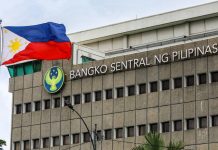THE Bangko Sentral ng Pilipinas is changing its strategy from passive to active gold trading as the central bank aims to reduce its share from the country’s gross international reserves (GIR).
“The MB (Monetary Board) decided to shift from passive (done before I assumed office) to active trading largely because of the change in the price dynamics of gold,” BSP Governor Benjamin Diokno said over the weekend.
“Before, the price of gold was in the neighborhood of $1,400/FTO (fine troy ounce); now, it’s around $2,000/ FTO,” he said.
On Friday, the BSP chief told the House of Representatives that the policy-setting Monetary Board decided to keep gold’s share in the GIR to only 10 percent by selling it.
Diokno said that of the record-high $98 billion gross international reserves (GIR) as of end-July, “12 percent are in gold form.”
“Studies show that the optimal portfolio mix of gold to GIR should be 9.8 percent. A WB (World Bank survey showed that the average allocation of gold relative to reserves should be around 9.55 percent,” he said.
Citing a World Gold Council report, the BSP chief said that a portfolio with 10 percent allocation to gold had a higher risk adjusted return compared to zero percent or five percent allocation.
“At the moment, the ratio of gold to GIR exceeds 10 percent. BSP will always be opportunistic in its reserves management,” Diokno said.
He noted that a new law makes BSP gold purchases from small miners more attractive.
In 2019, President Rodrigo Duterte signed Republic Act 11256, which exempts small-scale miners from paying income and excise taxes when they sell their gold to the BSP.(GMA News)



